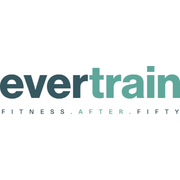Fitness can get confusing at times. Things get even more confusing as we age. The things that may have worked for us in the past, just don't seem to work the way they used to.
There is so much information out there. Where do we start? Below we have put together 5 of our best tips that we use with our "FitAfter50" clients.
1. Make improving mobility a number 1 priority.
You may have heard the term range of motion (ROM) before. It is so important to maintain a healthy ROM for our joints. As we get older we tend to lose ROM and sometimes the change can be irreversible.
Doing daily mobility work can not only prevent acute injury, but it can help preserve the health and function of your joints.
As the old saying goes, "an ounce of prevention is worth a pound of cure". This couldn't be more true when it comes to mobility work.
We recommend the following mobility schedule;
10-15 minutes of mobility work every day.
+
15-20 minutes of mobility work before each workout.
+
45-60 minutes of mobility work once per week.
If you can, add in a deep tissue massage, a chiropractic session or even a Fascial Stretch Therapy session to speed up results.
In our experience, one's mobility can have a large impact in their quality of life. If that is the case, then why wouldn't we make it a priority?
2. Build and preserve hard earned muscle with resistance training
Our bodies are building and breaking down muscle constantly. This process is called protein turnover.
The amount of muscle we gain or lose can be influenced by the demand that is put on our muscles.
As we age the impact of muscle loss is felt more. More muscle mass usually means stronger muscles. Lack of muscular strength in humans can mean a lower survival rate. Not only that but this can greatly impact our quality of life as well.
The good news is that we can have control over whether we are losing muscle mass, preserving it or building it.
We recommend people add 2-4 resistance training workouts per week. Make sure to target each muscle group at least twice per week to have the desired effect.
3. Intensify cardio days
When choosing between long duration steady state cardio and short duration interval training, we tend to lean towards interval training. For most of our clients' goals, high intensity interval training (HIIT) tends to yield better results. We find that HIIT works best for improving body composition, athletic performance and overall health as well.
With that said, we recommend you work your way up to HIIT. If you are only starting out, you may be better off adding in steady state cardio first. Then slowly integrate HIIT over time.
Here are some examples of how each might look;
Steady State Cardio - 45-60 minute nature hike
HIIT - 10s treadmill sprints (on medium incline) followed by 50s rest x 10-15 rounds
There are many ways you can intensify your cardio days. Just make sure that whatever you choose to do is a good fit for you, your current abilities and your goals.
4. Change your routine every 4-6 weeks.
Although we enjoy adding variety into our training programs, we don't do this for variety's sake.
We find that it is important to repeat certain movements often enough so that you can master the technique. Only once you master the exercise technique can you then receive the most benefit from a given exercise.
With that said, to avoid plateaus and to continue progressing it is important to change your routine every so often. We generally change our clients' training programs every 4-6 weeks.
These changes are what we call phases of training. Depending on the phase they are in the focus will be different. In each phase the variables of training (reps and sets, intensity, rest periods, etc.) will change. This systematic changing of training variables is what is called periodization.
To keep this simple, try changing up the reps and sets scheme of your exercise program.
Here is a basic example;
Month 1 - 3 sets x 12-15 reps with 45secs rest
Month 2 - 3 sets x 8-10 reps with 60s rests
Month 3 -4 sets x 6 reps with 120secs rest
By constantly changing your program up every 4-6 weeks, you will be able to continually improve and avoid plateaus.
5. Get help
Even the best and most experienced lifters are always finding ways to improve. The objective opinion of a friend or exercise coach can help you put together the missing pieces and help you to overcome hurdles as they come along.
Getting someone else to; help spot technique flaws, give you a spot so that you can lift heavier, or get advice on how to make a training program will ensure that you really are moving in the right direction.
Consider asking your fit friend/relative for help, going to exercise seminars or hiring an experienced exercise coach to help you out.
Conclusion
By implementing at least one of these tips into your routine you will begin to see changes. No matter what your goal is you can benefit from the above mentioned tips. For more information on training for people over 50 check out this post.
If you would like help designing a customized program for you and your goals, you can email us at info@evertrainlifestyles.com or simply fill out our contact form here.
Yours in health,
The Evertrain Team
You might also like;


